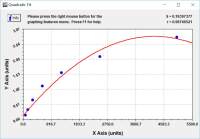Cancer Epidemiology in the United States: Racial, Social, and Economic Factors
互联网
互联网
相关产品推荐

ZBP1/ZBP1蛋白/DNA-dependent activator of IFN-regulatory factors;DAI;Tumor stroma and activated macrophage protein DLM-1蛋白/Recombinant Human Z-DNA-binding protein 1 (ZBP1)重组蛋白
¥69

茚地那韦;180683-37-8;United States Pharmacopeia (USP) Reference Standard;V61446-100mg
¥6275

ZBP1/ZBP1蛋白Recombinant Human Z-DNA-binding protein 1 (ZBP1)重组蛋白DNA-dependent activator of IFN-regulatory factors;DAI;Tumor stroma and activated macrophage protein DLM-1蛋白
¥1536

Zbp1/Zbp1蛋白Recombinant Mouse Z-DNA-binding protein 1 (Zbp1)重组蛋白DNA-dependent activator of IFN-regulatory factors;DAI;Tumor stroma and activated macrophage protein DLM-1蛋白
¥1836

BDNF/NT-3 growth factors receptor, Ntrk2 ELISA KIT/ Mouse BDNF/NT-3 growth factors receptor, Ntrk2 ELISA试剂盒
¥2980
相关问答

